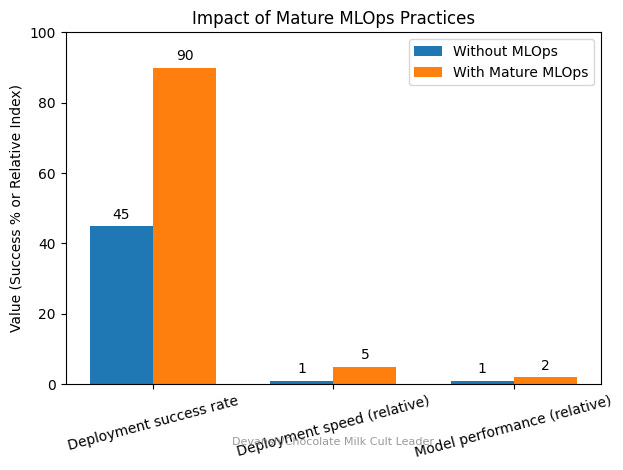AI Engineering in 2025: What It Really Takes to Reach Production
Why 85% of AI Projects Fail and how to fix that
Every month, the Chocolate Milk Cult reaches over a million Builders, Startup Founders, Investors, Policy Makers, Leaders, and more. If you’d like to meet other members of our community, please fill out this contact form here (I will never sell your data nor will I make intros w/o your explicit permission)- https://forms.gle/Pi1pGLuS1FmzXoLr6
“The rate of generative AI adoption outstrips longer-standing forms of AI, as well as enterprise forecasts. Most organizations that are actively investing in AI have generative AI in production. Of these, 27% say they have organization-wide adoption, while 33% say it is limited to specific departments or projects. This marks an increase from the year-ago survey figures of 13% and 28%, respectively. The adoption rate surpasses that of pattern-based and rules-based AI initiatives and exceeds the forecasts organizations made in 2024. By the end of 2025, 40% expect organization-wide rollout of generative AI tools.
Project failure rates appear to be elevated, as organizations attempt to deliver generative AI projects at pace.”
One of the most important questions on everyone’s minds is how they can avoid pilot purgatory and actually deploy AI Systems to production. After all it seems like despite the many breakthroughs in Generative AI, enterprises and more traditional businesses have struggled to adopt AI meaningfully the same way tech native companies have.
Organizations with functioning software and IT teams have completely struggled with GenAI? Why? Simply put, the reason AI Engineering often goes so wrong is that most people don’t understand what AI Engineering needs. It’s not Software Engineering with LLM/Vector DB apis. It’s a whole new way of thinking, one that requires a departure from determinism (in traditional software engineering) to the probabilistic thinking inherent with Language Models.
Modern AI systems—LLMs, RAG pipelines, agents—are not models. They are ecosystems. They decay. They drift. They break silently. They interact in ways no offline metric can predict. And the only organizations that succeed are the ones that treat AI Engineering as a systems discipline, not a modeling exercise.
So, how can we understand how to deal with them? While Language Models are relatively new (and constantly changing), Gen-AI is a subclass of a broader field of study called Machine Learning. This article will recontextualize ML Engineering best practices in the context of modern Language Models, providing you with the foundation to deploy your own AI systems and ensure your projects don’t end up in the graveyard of failures, along with the rest of the dreams of your sad, pathetic lives.

To access the full article—and all premium breakdowns going forward/written prior—upgrade to a premium subscription below.
Each piece is rigorously researched, built from firsthand signals, and written to make you sharper than the noise. It takes a long time for me to compile, analyze, and verify research. If you believe deep insight deserves support, become a premium subscriber to allow me to keep doing the same.
Flexible pricing available—pay what matches your budget here.
Most companies offer learning or professional development budgets. You can expense this subscription using the email template linked here.
Keep reading with a 7-day free trial
Subscribe to Artificial Intelligence Made Simple to keep reading this post and get 7 days of free access to the full post archives.



